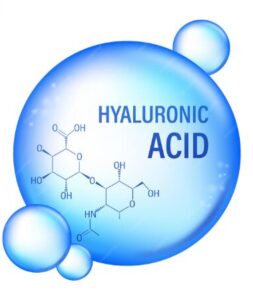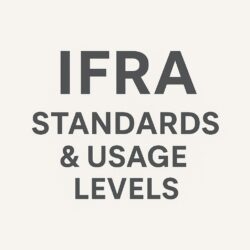Hyaluronic Acid Explained:
If you’ve been scrolling through skincare social media or browsing beauty aisles lately, you’ve probably noticed hyaluronic acid everywhere. This powerhouse ingredient has become a staple in serums, moisturizers, and even makeup products. But what exactly makes it so special, and more importantly, are you using it the right way?
Let me walk you through everything you need to know about hyaluronic acid, from its molecular structure to practical application tips that will actually make a difference in your skincare routine.

What is Hyaluronic Acid?
Despite its name, hyaluronic acid isn’t the harsh, exfoliating type of acid you might be thinking of. It’s actually a naturally occurring substance in our bodies, particularly in our skin, eyes, and connective tissues. Think of it as a moisture magnet that can hold up to 1,000 times its weight in water.
Your skin naturally produces hyaluronic acid, but here’s the catch: as we age, our bodies make less of it. By the time we reach our 40s, we’ve lost about half of our skin’s natural hyaluronic acid stores. This is partly why mature skin tends to look drier and show more fine lines.
The technical term for hyaluronic acid is glycosaminoglycan, which is a type of molecule that plays a crucial role in maintaining moisture levels and supporting skin structure. When you apply it topically, it works by drawing moisture from the environment and deeper skin layers to hydrate the surface.
Understanding Molecular Weight: Why Size Matters
Here’s where things get interesting, and why not all hyaluronic acid products are created equal. Hyaluronic acid molecules come in different sizes, measured by their molecular weight. This isn’t just a technical detail; it actually determines how the ingredient works on your skin.
High Molecular Weight Hyaluronic Acid (1,000-1,800 kDa)
These are the large molecules that sit on top of your skin’s surface. They create a moisture-locking film that prevents water loss and gives you that instant plumping effect you notice right after application. High molecular weight HA is excellent for immediate hydration and works well for all skin types, especially sensitive skin since it’s less likely to penetrate and cause irritation.
Medium Molecular Weight Hyaluronic Acid (100-300 kDa)
These molecules penetrate slightly deeper into the epidermis. They provide both surface hydration and work within the upper skin layers to improve moisture retention over time. Medium weight HA offers a nice balance between immediate and long-term benefits.
Low Molecular Weight Hyaluronic Acid (Below 50 kDa)
Also called hydrolyzed hyaluronic acid or nano hyaluronic acid, these tiny molecules can penetrate deeper into the skin. They work beneath the surface to stimulate collagen production and provide structural support. However, some people with very sensitive skin might experience temporary irritation from low molecular weight HA since it penetrates more deeply.
The best hyaluronic acid serums often contain a blend of different molecular weights to address multiple skin layers simultaneously.

The Real Benefits of Hyaluronic Acid
Let’s talk about what hyaluronic acid can actually do for your skin, beyond the marketing hype.
Deep Hydration Without Heaviness
Unlike heavy creams that might clog pores or feel greasy, hyaluronic acid provides intense hydration with a lightweight feel. This makes it perfect for oily and combination skin types who need moisture without added oil.
Plumping Effect on Fine Lines
When your skin is properly hydrated, fine lines and wrinkles become less noticeable. While hyaluronic acid won’t erase deep wrinkles, it can significantly improve the appearance of dehydration lines, especially around the eyes and mouth.
Supports Skin Barrier Function
A well-hydrated skin barrier is better equipped to protect against environmental stressors, pollution, and irritants. Hyaluronic acid helps maintain this protective barrier by keeping skin cells properly hydrated.
Speeds Up Wound Healing
Research shows that hyaluronic acid has anti-inflammatory properties and can promote faster healing of minor wounds, which is why you’ll find it in many post-procedure skincare products.
Works Well With Other Ingredients
One of the best things about hyaluronic acid is its compatibility. It plays nicely with virtually every other skincare ingredient, from vitamin C to retinol to niacinamide.
How to Use Hyaluronic Acid Correctly
This is where many people go wrong. You can have the best hyaluronic acid serum in the world, but if you’re not applying it correctly, you’re missing out on most of its benefits.
Apply to Damp Skin
This is the golden rule. Hyaluronic acid needs water to work effectively. Always apply it to slightly damp skin, right after cleansing or after spritzing your face with a hydrating mist. If you apply it to completely dry skin in a low-humidity environment, it might actually draw moisture from deeper skin layers, potentially leaving your skin feeling drier.

Layer It Properly
In your skincare routine, hyaluronic acid should come after cleansing and toning but before heavier creams and oils. The general rule is to apply products from thinnest to thickest consistency.
A typical routine would look like this:
- Cleanser
- Toner (leave skin damp)
- Hyaluronic acid serum
- Other serums (vitamin C, niacinamide, etc.)
- Eye cream
- Moisturizer
- Sunscreen (morning only)
Seal It In
After applying hyaluronic acid, you need to seal in all that moisture with a moisturizer or facial oil. Think of hyaluronic acid as bringing water to your skin, and your moisturizer as locking it in. Without that occlusive layer on top, the moisture can evaporate.
Consider Your Climate
If you live in a very dry climate or are using hyaluronic acid during winter months when indoor heating reduces humidity, be extra diligent about applying it to damp skin and sealing it with a good moisturizer. In extremely dry conditions, you might even want to use a humidifier in your bedroom.
Choosing the Right Hyaluronic Acid Product
When shopping for hyaluronic acid products, here’s what to look for:
Check the Ingredient List
Look for products that list hyaluronic acid or sodium hyaluronate in the first five ingredients. Sodium hyaluronate is the salt form of hyaluronic acid and is actually more stable and easier for skin to absorb.
Look for Multiple Weights
Products that contain different molecular weights will give you more comprehensive benefits. The ingredient list might show terms like “sodium hyaluronate,” “hydrolyzed hyaluronic acid,” or “sodium hyaluronate crosspolymer.”
Consider the Concentration
Effective concentrations of hyaluronic acid in skincare products typically range from 0.5% to 2%. Higher isn’t always better, especially for sensitive skin.
Check Supporting Ingredients
Look for products that combine hyaluronic acid with other hydrating ingredients like glycerin, panthenol, or ceramides for enhanced moisture retention.
Common Mistakes to Avoid
Using It on Completely Dry Skin
I’ve mentioned this already, but it bears repeating because it’s the most common mistake. Always apply to damp skin.
Skipping Moisturizer
Hyaluronic acid is a humectant, not a moisturizer. It needs to be sealed in with an occlusive or emollient moisturizer.
Expecting Anti-Aging Miracles
While hyaluronic acid is excellent for hydration and can improve the appearance of fine lines, it’s not a replacement for proven anti-aging ingredients like retinoids or vitamin C. Think of it as a supporting player in your anti-aging routine, not the star.
Using Too Much
More doesn’t equal better results. A few drops of serum are enough for your entire face and neck.
Who Should Use Hyaluronic Acid?
The short answer: almost everyone. Hyaluronic acid is suitable for all skin types, including:
- Oily skin: It provides oil-free hydration
- Dry skin: It delivers intense moisture
- Sensitive skin: It’s generally well-tolerated and gentle
- Aging skin: It helps plump fine lines
- Acne-prone skin: It hydrates without clogging pores
The only exceptions might be people with extremely sensitive skin who react to low molecular weight hyaluronic acid, but this is relatively rare.
Can You Use Too Much Hyaluronic Acid?
While hyaluronic acid is generally safe, using multiple products containing it throughout your routine isn’t necessary and won’t give you better results. One good serum is usually sufficient.
Some people report a tight or dry feeling when using hyaluronic acid, which typically happens when:
- They apply it to dry skin in a low-humidity environment
- They don’t seal it in with a moisturizer
- They’re using a product with irritating additional ingredients
Hyaluronic Acid Beyond Topical Skincare
You might also encounter hyaluronic acid in:
- Injectable fillers: Dermatologists use cross-linked hyaluronic acid to add volume and smooth wrinkles
- Supplements: Oral hyaluronic acid supplements are popular, though research on their skin benefits is still limited
- Sheet masks: Many hydrating masks feature hyaluronic acid as a key ingredient
The Bottom Line
Hyaluronic acid deserves its place in the skincare spotlight. It’s one of the most effective hydrating ingredients available, backed by solid research and suitable for nearly everyone. The key to getting results is understanding how to use it properly: apply to damp skin, choose products with multiple molecular weights when possible, and always seal it in with a moisturizer.
Remember, skincare is personal, and what works wonderfully for one person might not be ideal for another. Start with a simple hyaluronic acid serum, apply it correctly, and give it at least four weeks to see noticeable improvements in your skin’s hydration and overall appearance.
Your skin will thank you for the moisture boost, and you’ll finally understand why this ingredient has become a non-negotiable in so many people’s routines.


